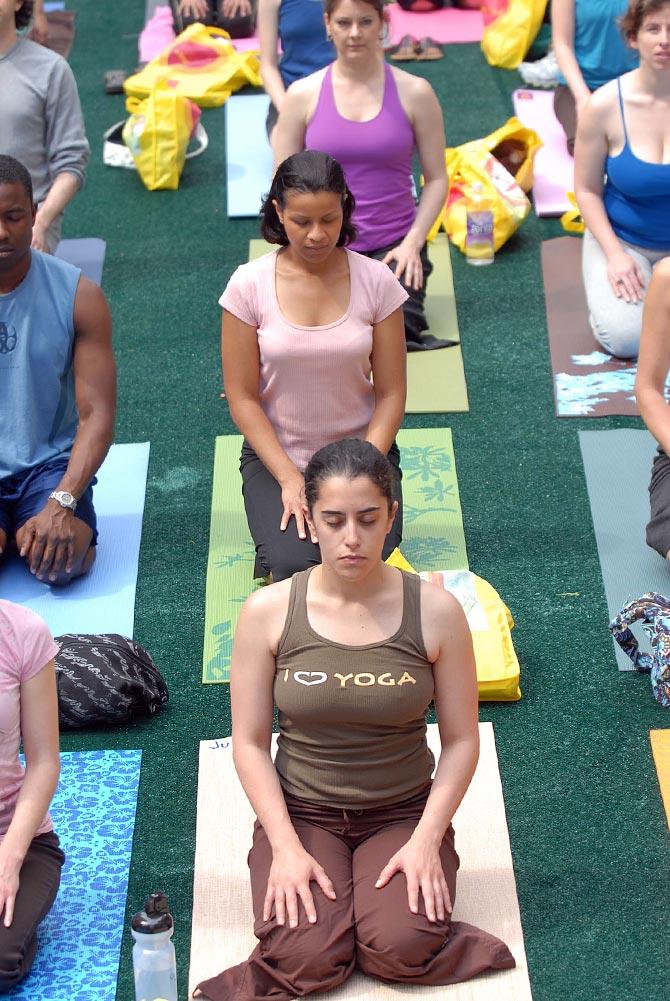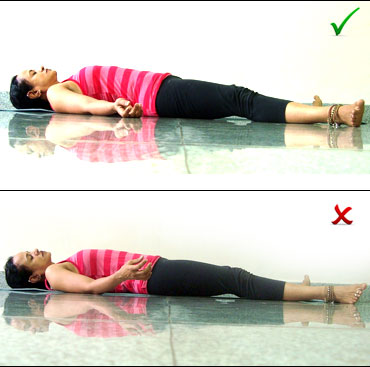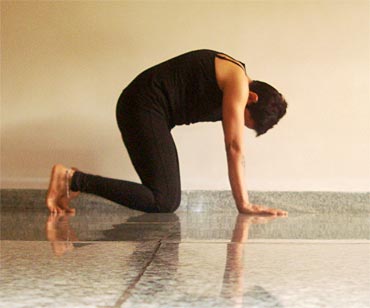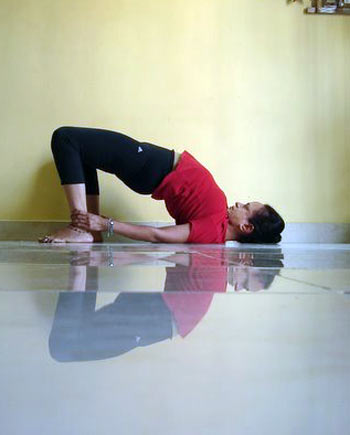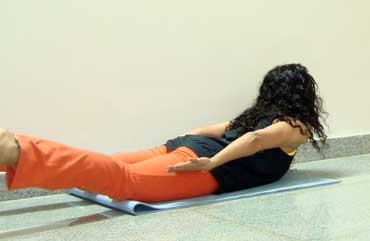 | « Back to article | Print this article |
Muscle pain? Five really easy yoga poses will cure it!
Get rid of that niggling pain with yoga. Shameem Akthar takes you through some simple asanas.
Across the world yogic stretches are used by those into hardcore sports, to heal from the inevitable aches that accompany field work. Physiotherapists use yogic stretches to heal from muscle pulls, cramps, strains or inflammation. While the first line of defence may be conventional medicine, it has to be complemented by a steady and organized yogic programme too. In the long term, the latter would be the one which sustain and support the healing completely. It would ensure the healing impact last longer too.
One way of using yoga is to follow a certain basic rules. Initially, the poses must be done very gently.
There has to be a lot of rest breaks to allow the muscles to relax. More attention should be paid to sequencing all movements with the breath, and ensuring that you are breathing, particularly where a pose may hit upon a pain spot.
To ensure that the healing is complete, after proper diagnosis, you need to eat foods that help control the problem. For instance, if the muscles are inflamed, you need foods the defuse body inflammation naturally, like Brewer’s yeast.
For injury, you need to include more vitamin C foods in your diet. Including foods rich in zinc is also vital.
Meditation is a super way to heal, though not taken seriously enough. Often, most people do not even understand how to meditate.
If you are new to meditation, you would do best by either downloading or buying short audio meditations, starting with just five to ten minutes initially, till the habit sets in.
Regular meditation would be a very powerful way to heal from any physical problem.
Including some healing movement everyday would go a long way in healing, instead of the avoidance tactic of not moving at all.
Even the areas in pain need movement to facilitate healing.
Shameem Akthar, yogacharya trained with the Sivananda Yoga Vedanta Center, leads you through five simple yogic practices that are pain-relievers.
Progressive body relaxation: Shavasana
Lie down in the corpse pose (shavasana) -- on your back, with the legs apart, hands off the body, on the ground, with the palms facing up.
Eyes should be shut and all movements should be stopped. Take the attention to your palms, tighten them, clenching them into fists.
Lift them off the ground, hold for a few seconds. Drop. Do that with the feet. Then dig the heels in the ground, lifting hips off the ground, tightening and then dropping them back to ground. Press the curve of the lower back into the ground, release it.
Then hold the stomach tightly for a few seconds, then relax it. Lift the chest up, drop it down. Lock the chin firmly between collarbones, release. Turn the head to right, and left gently. Then squeeze the face tightly, crunching up the facial muscles, then relaxing them.
Lie still for a few seconds before sitting up, to open your eyes.
Benefits: This simple practice is a powerful way to tightening, toning all muscle groups firmly and yet gently. It thoroughly relaxes the body and mind, yet gives a gentle workout.
All tight muscles are allowed to release their tension. The movement opens up blood flow to stiff or painful spots without causing discomfort.
It is a pre-meditative practice, but may be used as a complete practice in itself.
Marjarasana (Cat-cow stretch)
Kneel on your fours, palms below shoulders. Inhale, raising the head.
Keep hands straight, curve spine inwards. Exhale, to arch the spine, drop the chin so it gets locked between collarbones.
Do this a few times, increasing the number to five or ten.
Benefits: It is an ideal body work out which works all muscle group, gently.
It is a very healing pose and used in most ailments, used to cure body ache, problems of the nervous system, spine, digestive tract, and other chronic ailments, including blood pressure.
It is a very gentle way towards clearing stiffness, encouraging blood flow throughout and relieve pain.
Kandharasana (Shoulder pose)
Lie on your back, fold legs at knees, keep feet flat close to hips.
Hold ankles (or keep hands loose beside hips).
Inhaling raise the hips high in air, ensure the knees do not move outwards, tighten the butt muscles.
The chin lock (as above) would happen naturally. Hold the raised hips for ten-15 seconds. Continue normal breathing.
Exhale to lower hips back to ground. Repeat a few times.
Benefits: It is a powerful healing practice, removing stiffness all over the body, ensuring a powerful workout in a gentle manner.
Breath is facilitated too. It is used in chronic pain, muscular and spinal stiffness and respiratory problems.
Salabhasana (locust pose)
Lie on your stomach. Take the arms alongside the body, palms up. Keep the legs slightly apart.
Inhale and raise the chest and legs off the ground. Exhale while you drop them back to ground. Either do this five times or hold the final lifted position for five to ten seconds, breathing continuously throughout.
Benefits: Though more difficult than the others above, this one is more healing in the long terms, by positively challenging muscle groups that are involved with aligning your posture and spine.
All muscles groups are gently worked out. This helps the repairing agents to be carried to spots in pain, facilitating repair.
Ardha dhanurasana (Half bow pose)
Lie on your stomach, as above. Hold right ankle with right hand. Stretch out the left hand in front, and the left leg behind, as shown. Inhale. Exhale. While inhaling, lift your thighs off the ground, then the chest and hands, as they are positioned in the pose.
Hold for a few seconds and continue breathing naturally. Inhale. While exhaling, drop the body back to ground. Repeat a few times over and then follow the same routine on the other side.
Benefits: Same as Salabhasana
